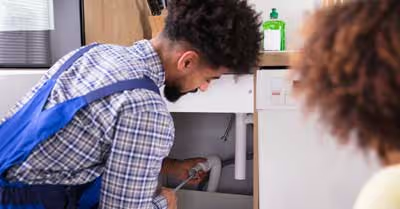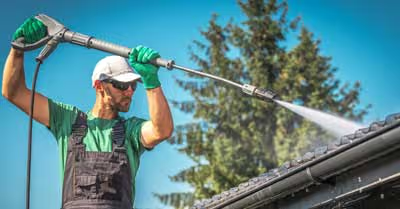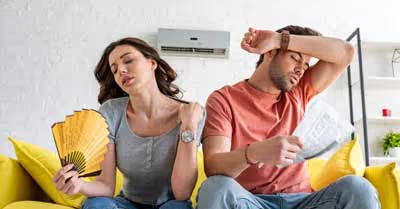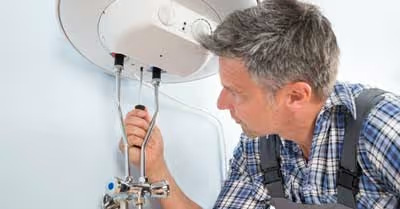Table of Contents
How to Disconnect a Washer
Disconnecting a washer is easy, but you do want to make sure that you do not make a mess. To properly disconnect your washing machine, you will need to turn off the water supply. There are two valves, one for hot water and one for cold water.
Then, you will also have to allow the water to drain into the tub and out of the appliance. Do a warm wash cycle for 30 seconds. This will drain the excess water in the hoses. Then, set the cycle to spin which will drain the water out of the machine and down the drainage tube. Now, turn the washer completely off.
When disconnecting the washer, you will want to unplug the electricity first. Water and electricity are never good together and even if you are confident, it is better to be safe. Then, you can use duct tape to secure the cord. This is especially important if the machine will be used somewhere else. Out of personal experience, you do not want to drag the cord around because it can get bent which can make it difficult, or impossible, to plug into a socket.
Now, you will unhook the drain hose from the drain pipe. It may be clipped or taped on. I prefer to use zip ties to hook it to the pipe. Have a bucket reader to catch water and old washcloths to wipe away any excess water that spills. This hose should also be pretty easy to disconnect from the washing machine. Then, it can be stored in the washer tub or tapes to the back of the appliance using duct tape.
Now, it is time to disconnect the hot and cold water hoses. They should be removed from the water supply and from the washing machine. Then, they can be stored inside the washer tub as well. Have a bucket ready because they are used for water and some moisture will likely remain inside.
How to Connect a Washer
Before you begin, you should make sure that the washing machine is close enough to the water supply valves, drain pipe, and power outlet. When the machine is where you want it, there should be a little space between the back of the appliance and the wall. Generally, this area should be 3 to 4 inches.
When you are installing a machine, you should always use new washing machine hoses. These hoses will connect to the outlets on the appliance and the valves. Many hoses themselves will be marked hot and cold for easy use. The machine will also say hot or cold or be marked with blue or red to indicate the temperature.
I have found that it is much easier to attach the water hoses to the machine first. This is because I can reach behind the machine to connect them to the valves. They should be attached by twisting with a wrench. Do so until they are completely tightened, but not striped. Then, connect them to the appropriate valves.
Now it will be time to hook up the drain hose and feed it to the drain pipe. Typically, the hose will be attached to the machine with a hose clamp. However, sometimes they are already attached to new washing machines.
The hose will then be pushed into the drain pipe. You should have the end of the drain hose about 4 inches into the drain pipe. Then, secure the drain hose using a clip or zip tie (you can also use duct tape or plumbing tape).
Finally, you can connect the electricity. Plug the electric cord in before you push the washer the rest of the way into the final position. Also, you may want to ensure that the washing machine works properly before you move it back. This will also make it easier to see any potential leaks or bad connections on the first load.
During and after a load, you need to check all of the connections including the drain pipe. Check for any moisture around the water hose connections to both the valves and the appliance.
Washing Machine Tips
If the washing machine does not properly drain or if the water spills out of the drain pipe, then there may be a clog. Even if the drain pipe is not fully blocked, it is still best to clear the clog using a drain snake.
If the valves you use to connect the washing machine show signs of a leak, then you should first try to tighten the connection. However, it could also be a sign of a weakened or corroded valve that needs to be replaced.
Before purchasing hoses, you should measure the area that they will need to fit into. You never want to extend a hose too much when connecting it because this can pull it loose. However, it is also best not to have a hose that is too long and has to be bunched up to properly connect.
After you push the washing machine into position, you should always make sure that the hoses are not compressed. Then, you should also check to make sure that the washer is level. You can even download an app for your phone that you can use as a level. The feet of the appliance will adjust to make up for any incline that may be present. A level washer will help to prevent leaks. Also, a washer that is not level makes shake and rattle while in use because the spinning will throw the mashing off of balance.
How to Disconnect a Dryer
There are electric and gas dryers and their disconnections are similar, but not exactly the same. If you have a gas dryer you will have to shut off the gas source and remove the supply hose. This hose can be stored in the dryer. If you have an electric dryer, you will just unplug the cord.
If you have a dryer that also has a steam cycle, you will have a water supply hose as well. Be sure to turn off the water supply and have a bucket ready to catch any water inside of it.
Now, you should be able to scoot the dryer out a little bit in order to access the dryer vent duct. The dryer hose will be attached to the pipe in the wall and the dryer itself using clamps. Some claps, like hose clamps, you will unscrew to loosen in order to remove. Other types you will have to squeeze to open them and slide them off.
How to Connect a Dryer
When you are connecting a dryer, the main thing is to make sure that the duct is connected tightly. Also, a duct should not be bunched up or compressed after the dryer is pushed into position. If the dryer duct is too long, then you should cut it so that it is the right size. This will help you save on your energy bill.
Typically, the dryer vent duct will be connected to the wall and the appliance using clamps. There are a few different types of clamps. Some types will be screwed on to tighten while others will be clamped with your hands to slide on and released once it is in position.
After you are sure that the vent duct is tightly secured onto the pipe in the wall and the appliance itself, you can plug the dryer in. The dryer will plug into a 220-volt outlet. If you have gas lines, then you should contact a professional technician to take care of it for you.
You may see that your plug does not fit the outlet that you have available. There are 3 prong and 4 prong outlets. Older prongs, those built before 2000, will usually have 3 prong outlets. Now, 4 prong outlets are required. All that you will have to do is to change the dryer cord to match the outlet that you have.
To change the cord, you just have to open the access panel on the back of the dryer. Then, you can loosen the connection by unscrewing the components and disconnecting the ground wire. To attach the new cord, you will connect the wires to the same color on the dryer and then connect the ground wire.
Dryer Tips
First, it is always a good idea to clean the ductwork before installing it. In addition, it does not hurt to check for debris in the wall pipe or the pipe on the dryer itself. Things could have gotten in that should be removed. Cleaning the ducts and pipes out can help prevent fires and overheating.
Also, building codes require metal ducts for dryers. This type will resist collecting lint and other debris. Flexible metal ducts are available, but are more likely to collect lint. However, if you have a white or silver vinyl hose, then you should replace it. These hoses are flammable unlike metal ducts and can cause a fire.
Recent Articles
















